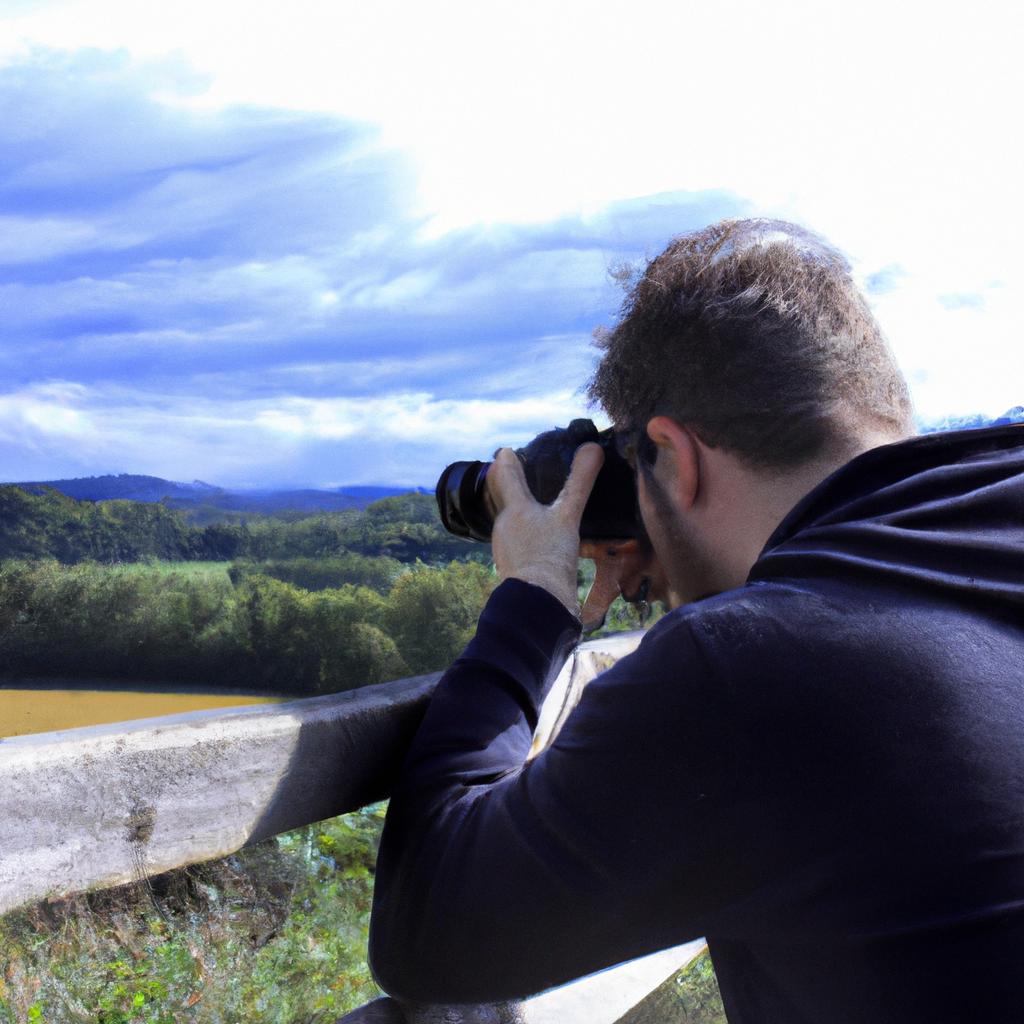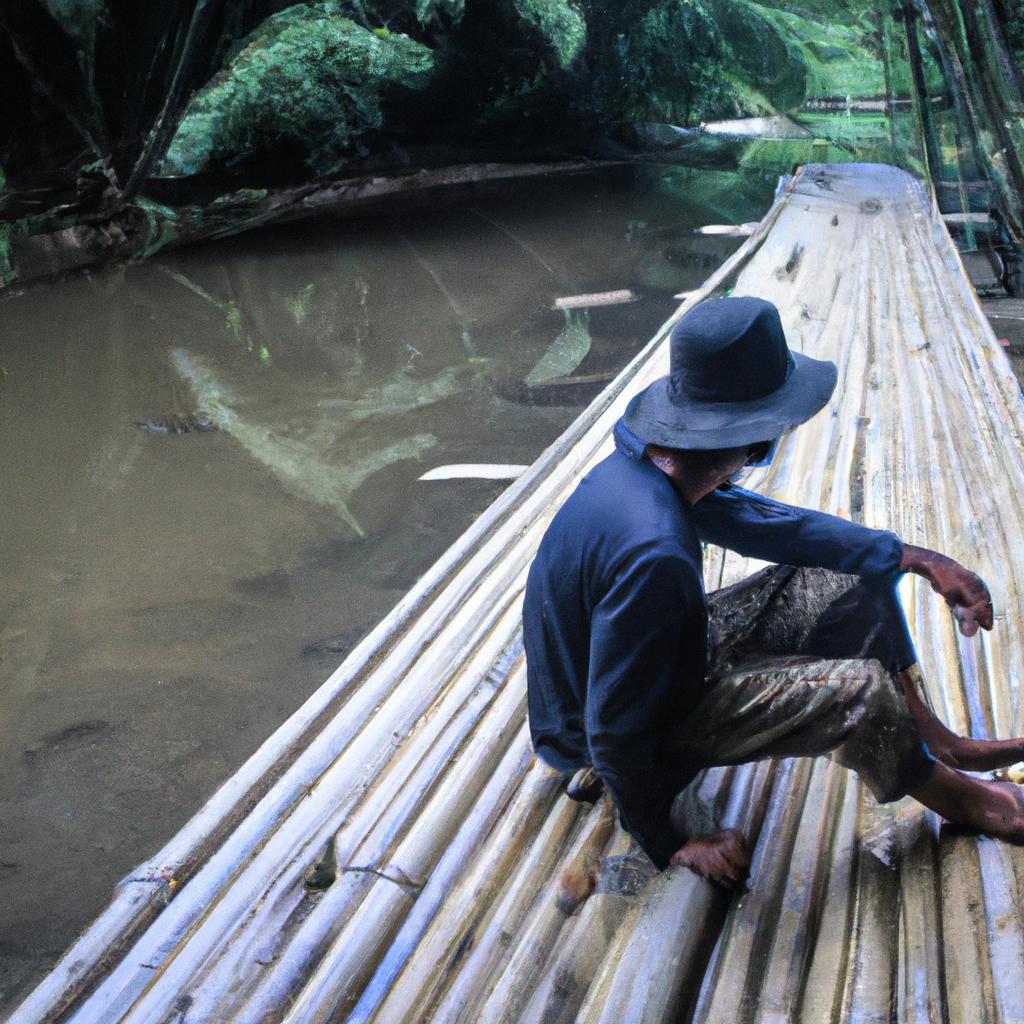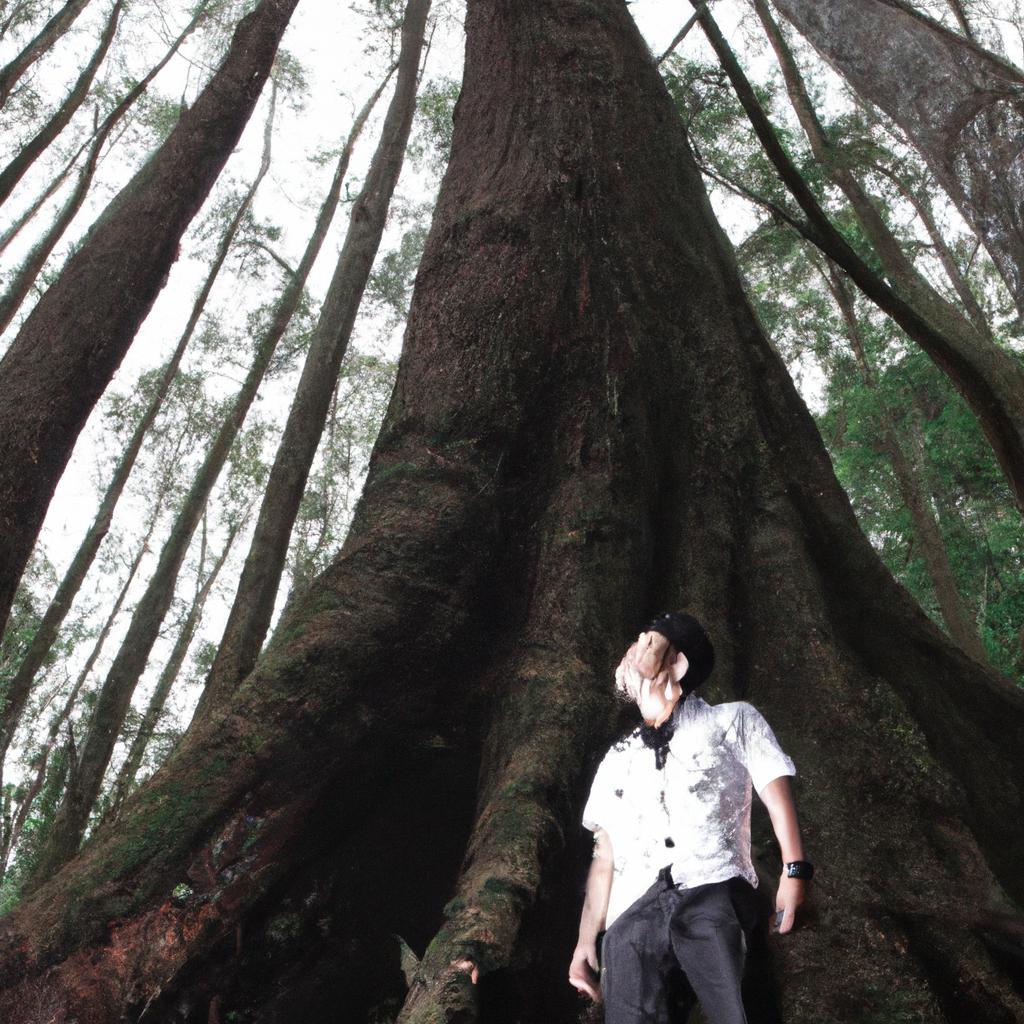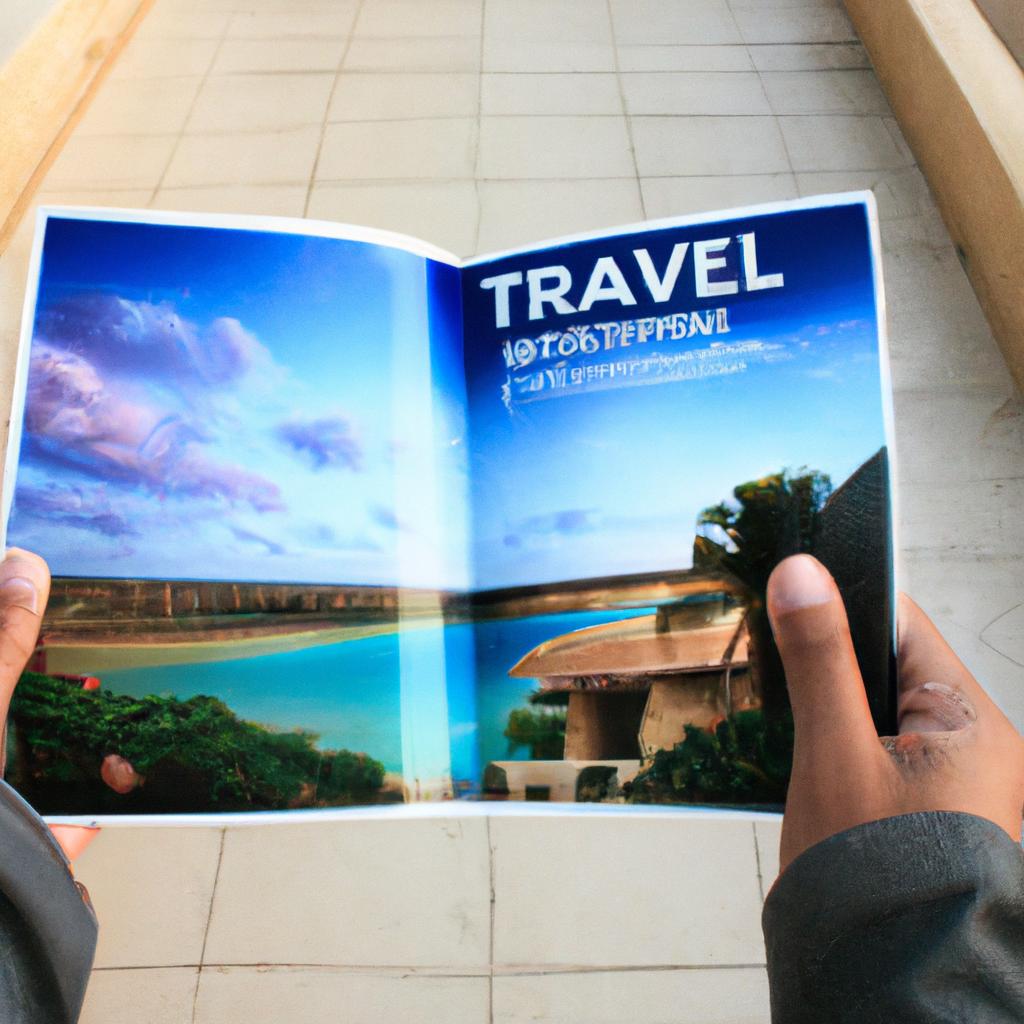Tent camping is a popular outdoor activity that allows individuals to immerse themselves in the beauty of nature and experience a sense of adventure. Whether it be pitching tents deep within dense forests or along tranquil lakeshores, this recreational pursuit provides an opportunity for people to disconnect from their daily routines and reconnect with the natural world. For instance, imagine a group of friends embarking on a weekend camping trip amidst towering pine trees, where they bond over campfire stories and fall asleep under a star-studded sky. In order to make the most out of such experiences, it is essential for campers to equip themselves with knowledge and techniques that ensure safety, comfort, and overall enjoyment during their tent camping escapades.
To begin with, selecting an appropriate camping location plays a pivotal role in enhancing the entire tent camping experience. It is crucial to choose sites that offer suitable amenities such as clean drinking water sources, restroom facilities, and adequate space for setting up tents. Furthermore, considering factors like proximity to hiking trails or fishing spots can further enhance the allure of the chosen destination. Additionally, assessing weather conditions beforehand becomes imperative as extreme temperatures or unpredictable rain showers can significantly impact one’s level of comfort while camping. Thus, thorough research regarding potential campsites ensures that camp ers can make informed decisions and select the best location for their tent camping adventure.
Once a suitable campsite has been chosen, it is important to properly set up the tent. This involves carefully reading and following the manufacturer’s instructions to ensure that the tent is assembled correctly. It is also recommended to practice setting up the tent before going on the actual camping trip, as this will help familiarize oneself with the process and identify any potential issues or missing equipment. Additionally, selecting an appropriate campsite within the designated area is crucial for safety and comfort. Look for flat ground away from potential hazards such as dead trees or rocky areas that may affect sleep quality or pose a threat during extreme weather conditions.
In order to stay comfortable throughout the camping trip, it is essential to pack appropriate gear and supplies. A good-quality sleeping bag rated for the expected temperature range should be chosen, along with a comfortable sleeping pad or air mattress to provide insulation and cushioning from the ground. It is also advisable to bring extra blankets or layers of clothing in case of unexpected drops in temperature during nighttime. In addition, packing essential items such as a headlamp or flashlight, insect repellent, sunblock, toiletries, cooking utensils, food, and water are necessary for a successful camping experience.
Safety should always be prioritized while tent camping. Campers should familiarize themselves with basic first aid techniques and carry a well-stocked first aid kit at all times. It is important to be aware of potential risks associated with wildlife encounters or adverse weather conditions such as lightning storms or flash floods. Following campground rules regarding food storage can help minimize interactions with wildlife like bears or raccoons. Additionally, practicing proper fire safety measures when building and maintaining campfires will prevent accidents and protect surrounding ecosystems.
Finally, respecting nature and leaving no trace behind is key in preserving our natural environments for future generations to enjoy. This includes properly disposing of trash in designated receptacles, avoiding unnecessary damage to vegetation or wildlife habitats, and leaving the campsite as clean as it was found.
In conclusion, tent camping provides a unique opportunity for individuals to connect with nature and create lasting memories. By selecting suitable campsites, properly setting up tents, packing necessary gear and supplies, prioritizing safety, and respecting the environment, campers can ensure a safe and enjoyable experience in the great outdoors. So grab your tent, gather your friends or family, and embark on an adventure that will leave you refreshed, rejuvenated, and connected to the beauty of our natural world.
Choosing the right tent size
Choosing the Right Tent Size
Imagine this scenario: you arrive at your campsite after a long day of hiking, only to find that your tent is too small for you and your camping companions. Frustrated and exhausted, you realize the importance of choosing the right tent size before embarking on your outdoor adventure. In this section, we will discuss the factors to consider when selecting a tent size.
Firstly, it is crucial to assess the number of people who will be using the tent. Typically, tents are designed to accommodate a specific capacity ranging from one-person shelters to larger family-sized models capable of housing six or more individuals. Additionally, take into account any extra space needed for storing gear or pets. By carefully considering these factors, you can ensure everyone has enough room to sleep comfortably.
Secondly, think about how much headroom you require inside the tent. If you’re someone who likes to sit up straight or move around freely within the shelter, opt for a taller model with higher peak heights. On the other hand, if maximum portability is essential for backpacking trips where weight matters most, choose a lightweight option with lower ceiling height.
Finally, weather conditions play an important role in determining which tent size suits your needs best. During hot summers or tropical climates, having a larger tent with proper ventilation becomes critical to avoid feeling cramped and suffocated in warm temperatures. Conversely, in colder environments or during winter camping expeditions, smaller tents tend to retain heat better and provide a cozier atmosphere.
To summarize:
- Assess the number of occupants and additional storage requirements.
- Consider desired headroom based on personal preferences.
- Take into account prevailing weather conditions.
| Factors | Considerations |
|---|---|
| Occupancy | Determine group size and need for additional space |
| Headroom | Decide on desired ceiling height and space for movement |
| Weather | Consider climate conditions and ventilation needs |
By carefully evaluating these factors, you can select a tent size that meets your specific requirements. So, let’s move on to the next step in planning your perfect camping trip!
Packing essential camping gear
Tent Camping: Essential Tips and Tricks
Choosing the right tent size is crucial for a comfortable camping experience. In the previous section, we discussed how to determine the appropriate tent size based on the number of occupants. Now, let’s delve into another important aspect of tent camping – packing essential camping gear.
Imagine this scenario: You arrive at your campsite after a long day of hiking, eager to relax in your cozy tent. However, you realize that you forgot some vital items back home. To avoid such disappointment, make sure to pack these essentials:
- A high-quality sleeping bag: Look for one that suits the expected weather conditions and provides adequate insulation.
- Proper lighting equipment: Invest in durable headlamps or lanterns to ensure visibility during nighttime activities.
- Cooking utensils and stove: Whether it’s preparing simple meals or brewing a cup of coffee, having the necessary tools will make cooking outdoors much easier.
- First aid kit: Accidents can happen anywhere, so it’s wise to carry a well-stocked first aid kit with bandages, antiseptics, pain relievers, and other basic medical supplies.
To further emphasize their significance, here is an emotional list highlighting why these items are indispensable during your camping trip:
- A warm sleeping bag offers comfort amidst chilly nights.
- Reliable lighting ensures safety when navigating through dark trails.
- Cooking utensils enable delicious meals under starlit skies.
- A comprehensive first aid kit provides peace of mind while exploring remote areas.
In addition to packing these essentials, organizing your gear efficiently is equally important. Consider using a table like the one below as a checklist before embarking on your adventure:
| Gear | Check | Remark |
|---|---|---|
| Sleeping bags | [ ] | |
| Lighting | [ ] | |
| Cookware | [ ] | |
| First aid kit | [ ] |
By ticking off each item on the list, you can ensure that nothing is left behind and have a stress-free camping experience. Next, we will explore how to set up your tent properly, ensuring a sturdy shelter in any weather condition.
Transition into subsequent section about “Setting up the tent properly”: Once you have all your gear packed and ready to go, it’s time to focus on setting up your tent correctly.
Setting up the tent properly
Transitioning from the previous section, where we discussed packing essential camping gear, it is now time to delve into setting up your tent properly. Imagine this scenario: You arrive at your beautiful campsite after a long day of hiking, eager to rest and unwind in nature’s embrace. However, if you fail to set up your tent correctly, your peaceful night under the stars might quickly turn into a frustrating ordeal.
To ensure a hassle-free camping experience, follow these tips for setting up your tent:
-
Choose an optimal location:
- Look for level ground that is free from rocks or tree roots.
- Consider natural windbreaks like shrubs or trees.
- Avoid areas prone to flooding or low-lying spots where water may accumulate.
- Take advantage of any available shade during hot weather.
-
Lay out the groundsheet:
- Place a groundsheet or tarp underneath your tent to protect it from moisture.
- Ensure that the edges of the groundsheet are tucked neatly beneath the tent footprint.
-
Assemble the poles and frame:
- Familiarize yourself with the components of your tent before attempting assembly.
- Follow the manufacturer’s instructions carefully when connecting poles and attaching them to their corresponding grommets on the tent fabric.
- Make sure all pole sections are securely fastened together for stability.
Now that you have successfully set up your tent, you can begin enjoying nature’s wonders while reaping the benefits of sheltered comfort. In our next section about campsite selection tips, we will explore how choosing the right spot can further enhance your camping experience. So let us embark on this journey towards finding an ideal haven amidst nature’s beauty.
Campsite selection tips
After setting up your tent properly, it is important to carefully consider the location where you will be camping. Selecting the right campsite can greatly enhance your overall experience and ensure a comfortable stay amidst nature’s beauty. Let’s explore some essential tips for choosing an ideal spot.
Example scenario:
Imagine arriving at a campground surrounded by tall trees with dappled sunlight filtering through their branches. You notice a serene lake nearby, its crystal-clear water reflecting the vibrant colors of the sunset. This picturesque site seems perfect for pitching your tent and enjoying a peaceful night under the starry sky.
When selecting a campsite, keep in mind these key factors:
-
Proximity to amenities: Consider how close or far you want to be from facilities such as restrooms, showers, and potable water sources. While being near these amenities may provide convenience, if you prefer solitude and privacy, opt for a more secluded area away from high traffic zones.
-
Level ground: Look for flat terrain to set up your tent comfortably without any slopes or uneven surfaces that could disrupt sleep or cause discomfort during activities inside the tent.
-
Natural protection: Seek out sites with natural barriers like rocks or shrubbery that can shield you from wind gusts while also providing additional privacy.
-
Environmental impact: Choose campsites that have already been established rather than creating new ones to minimize damage to surrounding vegetation and wildlife habitats.
To further illustrate this point, here is a table showcasing different types of campsites along with their advantages and disadvantages:
| Type of Campsite | Advantages | Disadvantages |
|---|---|---|
| Forest | Shade provided by trees | Potential hazard from falling branches |
| Beach | Serene view of water | Exposure to sand and strong coastal winds |
| Meadow | Open space for stargazing | Limited natural protection from elements |
| Mountainside | Panoramic views of surrounding peaks | Steep terrain may pose challenges during setup |
By carefully considering these factors and weighing the pros and cons, you can choose a campsite that aligns with your preferences and ensures an enjoyable camping experience.
Now, equipped with knowledge on setting up your tent correctly and selecting an ideal campsite, let’s explore some useful hacks for making delicious meals over a campfire.
Campfire cooking hacks
Imagine this scenario: You arrive at your campsite, excited to embark on a memorable tent camping experience. As you unpack your gear, you realize that your tent is too small for your needs. This unfortunate situation could have been avoided with proper planning and understanding of what makes a good tent. In this section, we will explore essential tips for choosing the right tent to ensure comfort and protection during your camping adventure.
When selecting a tent, there are several factors to consider. First and foremost, think about the number of people who will be sleeping in it. A general rule of thumb is to select a tent that accommodates one or two more people than actually present – this allows extra space for storing gear or providing breathing room. Additionally, consider the weather conditions you may encounter during your trip. If you anticipate heavy rain or strong winds, opt for a sturdy tent made from durable materials such as ripstop nylon.
To further assist you in making an informed decision when purchasing a tent, here are some key features to look out for:
- Waterproofing capabilities: Ensure that the tent has adequate rainfly coverage and sealed seams to keep water out.
- Ventilation system: Look for tents with mesh panels or windows to allow airflow and prevent condensation buildup.
- Easy setup: Consider tents with color-coded poles or intuitive assembly systems for hassle-free pitching.
- Weight and portability: If backpacking or hiking long distances, prioritize lightweight options that can be easily carried.
Now let’s take a closer look at these features through the following table:
| Feature | Description |
|---|---|
| Waterproofing capabilities | Protects against rainwater seepage |
| Ventilation system | Prevents condensation inside the tent |
| Easy setup | Simplifies pitching process |
| Weight and portability | Allows easy transport during outdoor activities |
By carefully considering these aspects and noting your specific needs, you can select a tent that suits your camping style and ensures an enjoyable experience. Remember, investing in the right tent is crucial for providing comfort and protection from the elements during your outdoor adventure.
Transitioning into the subsequent section about “Staying safe in the wilderness,” it’s important to be well-prepared not only with proper gear but also with essential knowledge on how to stay safe amidst nature’s unpredictable challenges.
Staying safe in the wilderness
Consider this hypothetical scenario: John and Sarah embark on a weekend tent camping trip deep in the wilderness. Their excitement quickly turns into panic when they realize they are ill-prepared for potential dangers lurking amidst nature’s beauty. To ensure that your wilderness experience remains safe and enjoyable, keep these tips in mind:.
-
Plan ahead:
- Research the area you plan to camp in, including any potential risks or hazards.
- Check weather forecasts before heading out, as sudden changes can impact safety conditions.
- Prepare an itinerary with estimated arrival times at various checkpoints to aid search parties if needed.
-
Pack smartly:
- Carry essential survival gear such as a compass, map, first aid kit, water filtration system, and extra food rations.
- Don’t forget appropriate clothing layers for varying weather conditions, including rain-resistant outerwear and sturdy footwear.
- Always bring reliable communication devices like a fully charged cellphone or two-way radios.
-
Practice wildlife awareness:
- Understand local wildlife habits and how to react appropriately during encounters.
- Store food securely to avoid attracting animals near your campsite.
- Learn how to identify poisonous plants and venomous creatures commonly found in the region.
-
Leave no trace:
Preserve Nature Protect Wildlife Promote Sustainability Dispose of waste properly Avoid disturbing nesting sites Use eco-friendly camping products Minimize noise pollution Respect protected areas Conserve water resources Adhere to designated trails Refrain from feeding wild animals Utilize reusable utensils Respect flora and fauna Report any illegal activities Support local conservation efforts
By adhering to these guidelines, you can minimize risks associated with wilderness camping and ensure a safe experience. Remember, your safety is paramount when venturing into the unknown beauty of nature. So, be prepared, stay vigilant, and make lasting memories while respecting and protecting our precious natural resources.











